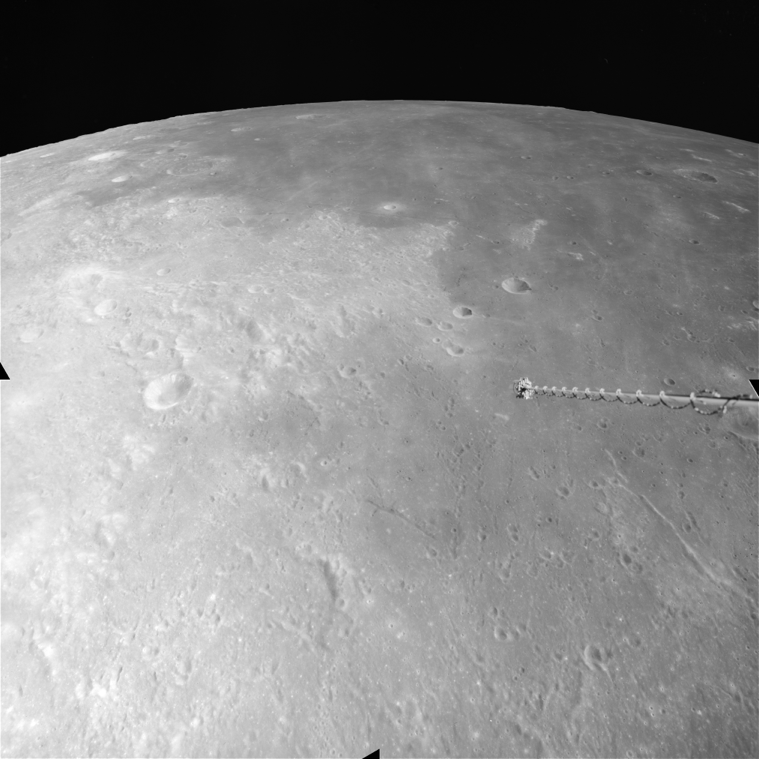
| Project Home | About the Scans | Browse Gallery | Image Map | Support Data | Resources | Ephemeris |
Featured Image - (09/22/2009)
The First Lunar Landing
On July 20, 1969, Neil Armstrong and Buzz Aldrin took humanity's first steps into the larger Universe around us, successfully landing at a point in Mare Tranquillitatis now known to history as Tranquillity Base. Interestingly, the Apollo 15, 16, and 17 missions did not overfly Tranquility Base, so this region was not ever comprehensively imaged by the powerful photographic instrumentation aboard the Apollo 15, 16, and 17 missions. However, during the Apollo 16 mission, an off-nadir image was collected by the Apollo Metric Mapping Camera which includes the Apollo 11 landing site (Figure 1). The contrast between the high-albedo highlands and the low-albedo mare is quite evident.
You can see that Apollo 11 was targeted for a (relatively) smooth area of Mare Tranquillitatis. For the first lunar landing, mission planners wanted to set the Eagle down in a smooth, flat, level location on the lunar surface. From this photograph, it is easy to see why the Eagle was targeted at this location for the first landing, when the overarching objective was to demonstrate that humans could land and return safely from the Moon.
Figure 1. Southeastern Mare
Tranquillitatis, including the Apollo 11 landing site (Apollo Image
AS16-M-1389 [NASA/JSC/Arizona State University]).

|
|
Space Exploration Resources |
|
 LPI LPI
|
